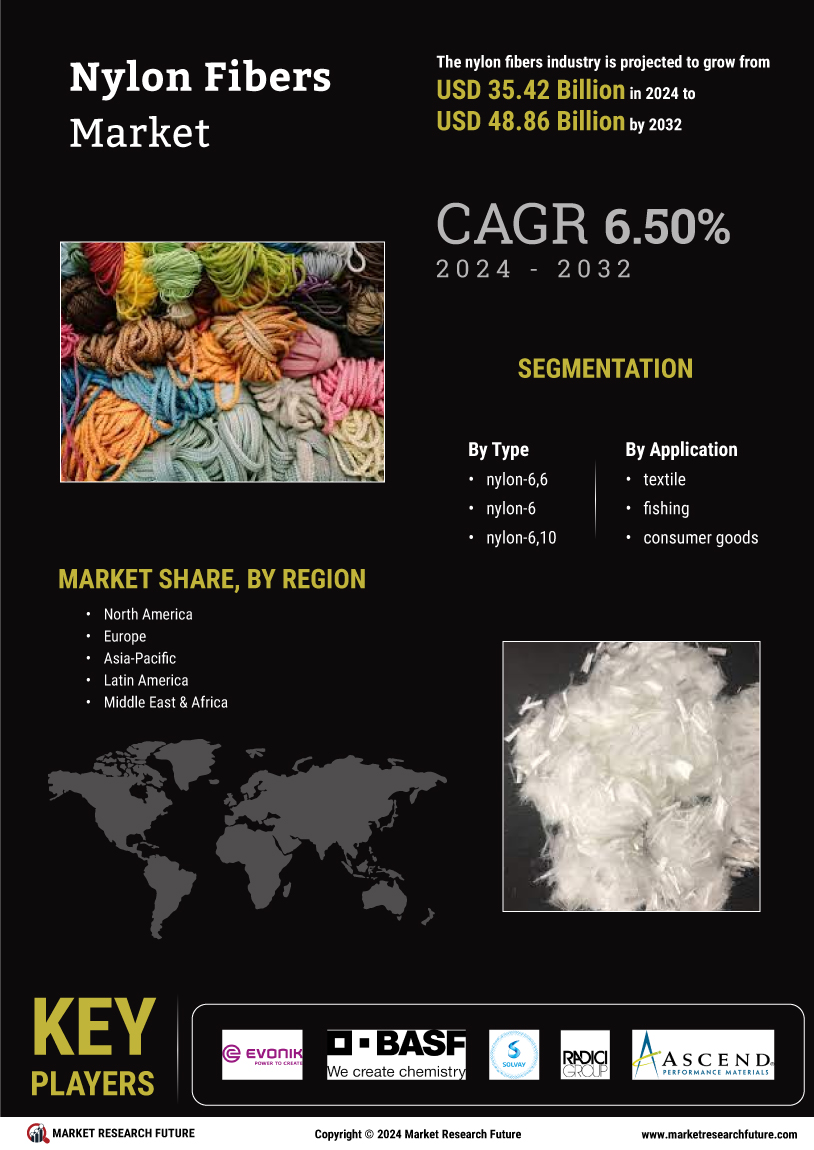Rising Demand in Apparel Sector
The Nylon Fibers Market experiences a notable surge in demand from the apparel sector, driven by the material's lightweight, durable, and elastic properties. As fashion trends evolve, manufacturers increasingly favor nylon for its versatility in producing various clothing items, including activewear and outerwear. In 2025, the apparel segment is projected to account for a substantial share of the nylon fibers market, reflecting a growing consumer preference for high-performance fabrics. This trend is further supported by the increasing awareness of sustainable fashion, prompting brands to seek eco-friendly nylon alternatives. Consequently, the nylon fibers market is likely to witness robust growth as it aligns with the evolving needs of the apparel industry.
Expansion in Automotive Applications
The Nylon Fibers Market is poised for growth due to the expanding applications of nylon in the automotive sector. Nylon fibers are increasingly utilized in manufacturing components such as seat covers, airbags, and under-the-hood parts, owing to their strength and resistance to heat and chemicals. The automotive industry is projected to witness a compound annual growth rate (CAGR) of approximately 4% from 2025 to 2030, which could significantly bolster the demand for nylon fibers. As automotive manufacturers prioritize lightweight materials to enhance fuel efficiency, the nylon fibers market is likely to benefit from this trend, indicating a promising future for nylon in automotive applications.
Increased Focus on Sustainable Practices
The Nylon Fibers Market is witnessing a shift towards sustainability, with manufacturers increasingly adopting eco-friendly practices in production. The rise in consumer awareness regarding environmental issues has prompted companies to explore sustainable nylon alternatives, such as recycled nylon fibers. This trend is expected to gain momentum, as the market for recycled materials is projected to grow significantly in the coming years. By 2025, the demand for sustainable nylon products is likely to increase, driven by both consumer preferences and regulatory pressures. As a result, the nylon fibers market is anticipated to evolve, aligning with the broader movement towards sustainability in various industries.
Growth in Construction and Industrial Sectors
The Nylon Fibers Market is experiencing growth driven by increasing demand from the construction and industrial sectors. Nylon fibers are utilized in various applications, including ropes, nets, and reinforcement materials, due to their high tensile strength and durability. The construction industry is projected to grow at a steady pace, with investments in infrastructure development and renovation projects. This growth is likely to create a favorable environment for nylon fibers, as they are essential in ensuring the longevity and reliability of construction materials. Consequently, the nylon fibers market is expected to benefit from this upward trend in construction and industrial applications.
Technological Innovations in Fiber Production
Technological advancements in fiber production are transforming the Nylon Fibers Market, enabling manufacturers to enhance the quality and performance of nylon products. Innovations such as advanced spinning techniques and the development of high-tenacity nylon fibers are gaining traction, allowing for the creation of stronger and more durable materials. These innovations not only improve the mechanical properties of nylon but also contribute to cost-effective production processes. As a result, the nylon fibers market is expected to expand, with manufacturers increasingly adopting these technologies to meet the rising demand for high-performance fibers across various applications, including textiles and industrial uses.

















Leave a Comment